The GIGABYTE H370N WiFi Review: Mini-ITX with HDMI 2.0 and 802.11ac Wave 2
by Joe Shields on June 21, 2018 9:01 AM EST- Posted in
- Motherboards
- Intel
- Gigabyte
- Mini ITX
- Core 8th Gen
- Coffee Lake
- H370
Visual Inspection
Small form factor boards, like the Mini-ITX H370N WIFI we are looking at today, do not have a lot of room to make the boards look pretty. Typically we see heatsinks that can give the boards some flare, and perhaps some stenciled pattern working its way through any of the free space on the PCB. In this case, the H370N WIFI doesn't use any stenciling on the black PCB but uses the heatsinks and RGB LEDs to give it some life. At a high level, we see CPU power and three 4-pin (hybrid) fan headers up top, two DRAM slots, SATA ports, and ATX power on the right, while a black PCH heatsink, a reinforced PCIe slot, and the first (of two) M.2 slots are just above it. The back of the board is where the second M.2 slot is hiding out.
A total of four RGB LEDs are on the bottom left-hand corner of the board under the audio stack which gives the board a nice, if unbalanced, glow when in use. If additional lighting is needed, the board does have a 4-pin RGB header located just below the front USB 3.0 header on the bottom right-hand corner of the board. It also has a 3-pin digital RGB header just behind the Wireless module. The integrated and attached RGB LEDs are controlled through GIGABYTE's RGB Fusion software.
Being an 'H' series board, we know that the intent here is to use a locked processor and run things as Intel designed them. In other words, there isn't any overclocking on the board for the CPU and Memory. To that end, we will not see incredibly robust power delivery bits as it does not need to support more than what the CPU is listed at stock.
In this case, GIGABYTE uses an Intersil ISL95866 multi-phase (4+3) PWM controller driving On Semiconductor NTMFS4C06N and NTMFS4C10N MOSFETs. Feeding power to these IC's is a single 8-pin EPS 12V connector.
Spinning the board around, on the right side we are able to see the two DDR4 DRAM slots supporting up to 32GB of DDR4-2666 RAM in grey, while the four black SATA ports are vertically oriented located closer to the edge of the board. We can also see the USB3.0 and USB 2.0 headers as well as the front panel header in white in the middle. There are a lot of connections shoe-horned in there, but, with the size of the board, there isn't much else board designers can do.
Above is a closeup of the SATA and USB ports/headers and the front panel header. As with most boards, RAID 0,1, and 10 is supported through SATA.
The bottom part of the board is where we'll find the first M.2 slot with the connector just to the right of the PCH heatsink supporting up to 80mm drives. I am a bit concerned with the chipset heatsink sitting immediately below as those devices get a bit warm as is without the help of something else so close.
There is no special arrangement for audio, except a few filter caps. The Realtek ALC1220-VB is nominally a 7.1 channel audio codec, however GIGABYTE has chosen only to give a 2.1 jack stack.
The back panel IO has a total of five USB ports, three display outputs for the integrated GPU, dual RJ-45 ports for the Intel-based NICs, the CNVi based Wi-Fi module, and a 3-plug audio stack. Some may feel a bit claustrophobic with five USB ports (and no USB 3.1 10 Gbps ports), but outside of that, has what is needed for most users. The board offers dual HDMI ports with one supporting HDMI 1.4, the other, supporting HDMI 2.0 through its Megachips MCDP2800 converter chip which will allow 4K at up to 60 FPS - a feature found on only a few motherboards.
- 1 x DisplayPort
- 2 x HDMI
- 1 x USB 3.0 Type-C
- 4 x USB 3.0
- 2 x RJ-45
- 2 x SMA antenna connectors
- 3 x Audio Jacks
In the Box
GIGABYTE Includes the following:
- User's Manual
- Quick Installation Guide
- Driver Disk
- 2 x SATA cables
- SMA antenna
- Rear I/O plate



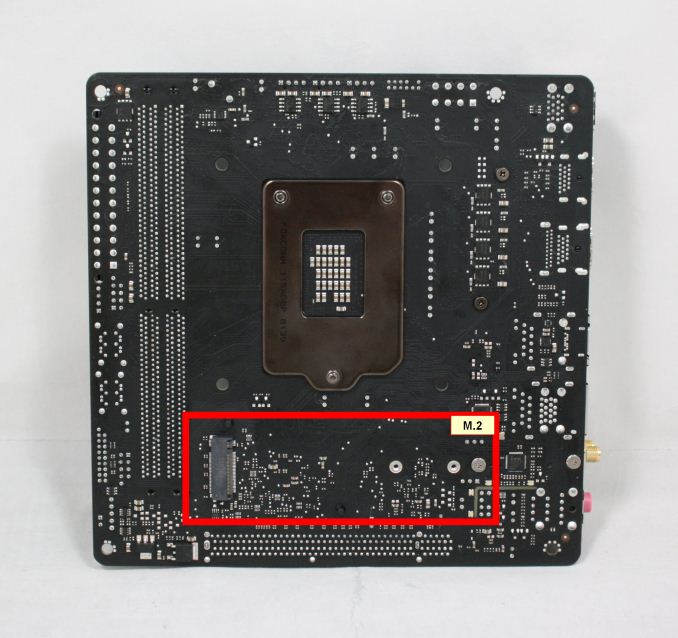
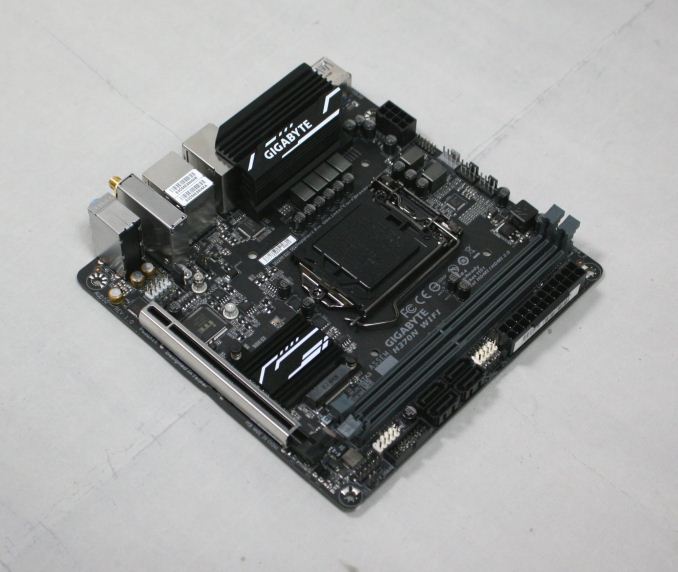
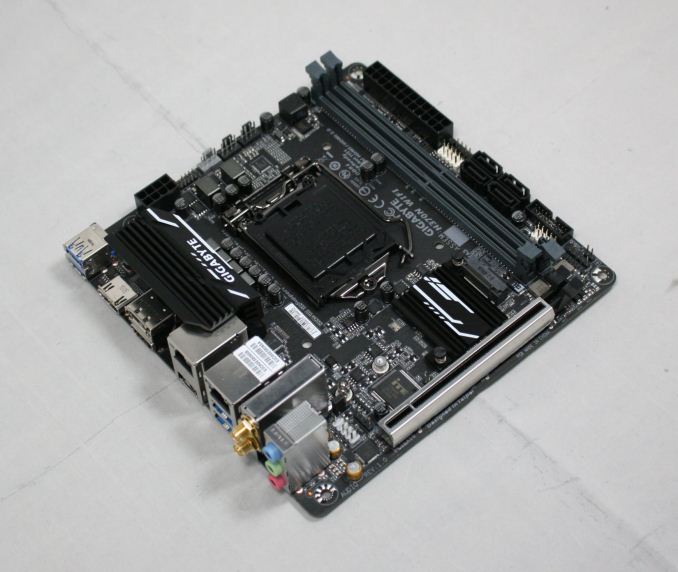
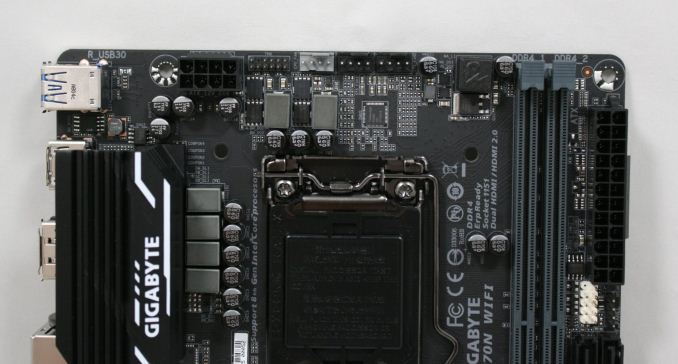
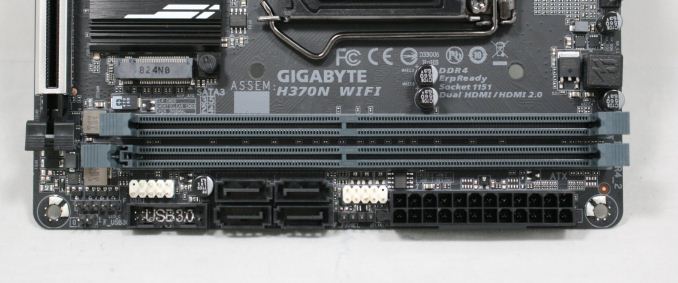
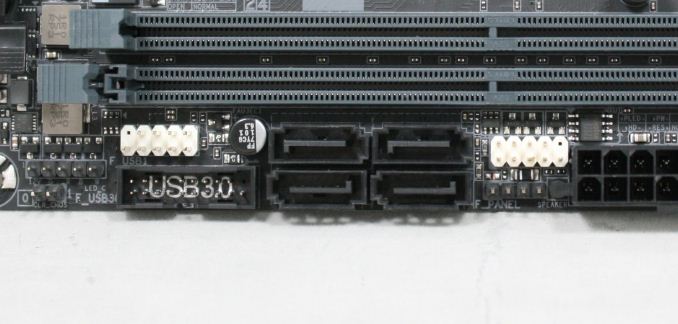
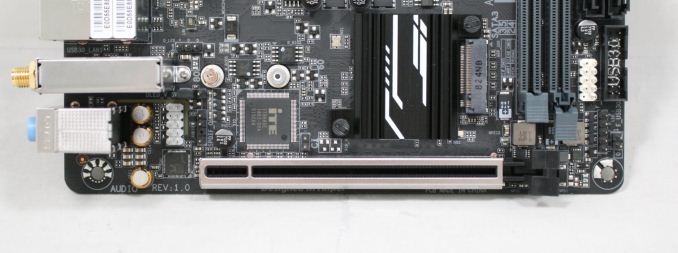
















23 Comments
View All Comments
close - Wednesday, June 27, 2018 - link
@MadAd: They could put at least 2 USB C ports there but I don't see why they would remove the USB A. Especially since that backpanel doesn't look cramped at all. It's amazing how many people only see their needs and wants in front of their eyes and can't even conceive that that vast majority of people want or need something else.close - Wednesday, June 27, 2018 - link
@MadAd. "Stop being a luddite, its the progress we need."Sure, why be stuck on century old analog tech when we can replace all the audio jacks with BT connections? Why put HDMI, DP, USB ports, etc. when all of these can be replace with TB3 over USB C port? Why be stuck on 1Gbps Ethernet when 2.5G-10G are already here?
Oh, it would make the board more expensive and most people would have to replace all of their cables, adapters, peripherals, etc? Progress.
There is no indication at this time that a significant number of people need more than 1 Type C on a PC. When USB 3.0 launched most MoBos had 1 or 2 ports, and almost no case had them. It's slow because people selling them don't have to think of only the 2 of you, but to the other thousands that need something else, they need that "legacy".
1_rick - Thursday, June 21, 2018 - link
That would mean you'd have to buy A-C adapters for your keyboard, mouse, existing thumb drives, etc., unless you were willing to buy a new keyboard, mouse, etc.Mr Perfect - Friday, June 22, 2018 - link
That would be the dream some day, but for now we're in this weird chicken-and-the-egg scenario. Motherboards don't have more than one USB-C port(if that), and peripherals don't come with USB-C plugs. Someone's going to have to push the issue if the market is going to move anytime soon. Even then, people would probably want motherboards with half USB-A and half USB-C, just for existing peripherals.Motherboards having more then one USB-C would be a good start.
CharonPDX - Friday, June 22, 2018 - link
For laptops, I agree. Even for compact custom-form-factor desktops, sure, maybe just one or two USB-A ports. But for desktops using a standard ATX I/O shield? No reason to skip USB-A. *MORE* USB-C, especially 10Gbit, and even more especially Thunderbolt-3 capable, should be standard, though.I want to see at least 4 USB-C ports on the back panel every motherboard, with at least 2 of them Thunderbolt-3 capable, and preferably all 10Gbit capable.
But I also understand that the vast majority of peripherals are still USB-A. Essentially all wired keyboard and mice have hardwired cables that end in a USB-A port. While most other external USB devices have removable cables that can easily be swapped for one that ends in a USB-C plug instead of a USB-A plug, it's still not the standard. (I was floored when my recently-purchased external Blu-ray drive included two cables in the box - one a micro-USB-B-3.0 to USB-A 3.0, and one female USB-A 3.0 to USB-C dongle. I would have preferred that it include a micro-USB-B-3.0 to USB-C that was as long as the micro-B-to-A it came with, than a female-A-to-C dongle, but it's a start.)
risa2000 - Saturday, June 23, 2018 - link
While it may look sexy to have full USB-C interface, I am not sure that mice, keyboards and most of the other stuff (BT, Wifi, gamepad dongles) require 10 Gbps speed, nor they require USB-C type connector which, from my experience, is less "holding" than typical Type A. Besides all those things I wrote above I typically connect once.The only device I own which would benefit from Type C connector is my smartphone. Everything else would need CtoA adapters, making the actual physical connection even less stable.
Galcobar - Thursday, June 21, 2018 - link
Typo, page 1, section Information on Intel's..."... Cutress reviewed a couple of processors (i7-8700K and i7-8400)... "
Perhaps that should be i5-8400, or i7-8700?
StormyParis - Friday, June 22, 2018 - link
Nice review, thank you.I'm holding off on upgrading my 5 to rig until the "cache virus" situation is fixed in silicon, but when I'll finally move, I'll be looking for a very similar board. It's nice to see boards for regular folks tested, not just high-end stuff. This one is "riced" right.
timecop1818 - Friday, June 22, 2018 - link
Why do you even care? None of single user desktop machines are affected. Update BIOS/microcode, install latest Windows, and disable all the spectre/meltdown mitigation shit to regain normal computing speeds. Done.CharonPDX - Friday, June 22, 2018 - link
With the HDMI 2.0 port, I'm curious if this board has all the necessary firmware and hardware bits to support UHD Blu-ray playback.